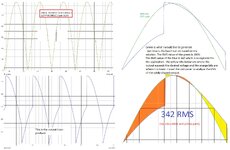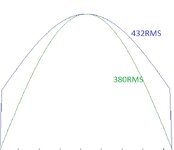townsend
Member level 1

Hello everyone!
I'm new here - just freshly registered. I have a PhD in Neuroscience, with other degrees prior in Mathematics and Computer Science, and prior to that I earned diplomas from college in the areas of Electronics and Electrical. I don't profess to be a formally recognized "Engineer" and do not have the PEng designation, but my formal study of the area at the college level was carried through as I worked on my Undergrad, Master's and Phd, and I do have two patents registered to my name in the area of EEG acquisition electronics.
Put simply, I might not be familiar with all the jargon that PEng's use, but I have a good grasp of the principles and am able to design my own stuff and debug/troubleshoot other peoples' designs. So, please excuse me in advance if I don't seem to follow what you are saying - its just a matter of us speaking different working languages.
So, here's my question:
I am in the middle of trying to implement an idea, but I'll spare you all the details and only include what is necessary to help describe my problem. I have a system operating at about 680V and about 40A, and I need to be able to switch a component in and out about 120 times per second. I am under the gun to get a prototype completed fast, and so instead of working on my own switching mechanism, I chose to use a solid state relay (SSR). I chose one with random on/off (i.e. it doesn't wait for a zero crossing, but switches when you tell it to). I also need optical isolation to simplify the connection to the microcontroller that will be handling the timing.
To guarantee perfect operation, I really need sub-millisecond timing accuracy. I also don't want to break the bank with the project, so I wanted to keep the cost of the switch under $50. Unfortunately, the only solution that I found indicated in the datasheet that the device would switch on (and off) within 1 millisecond of being told to do so.
I was disappointed but checked my calculations and found that although not ideal, this would produce "acceptable" results. Without providing all the details, the potential for the delay will result in the output voltage of my project being generated to be a little higher or lower than desired, but still within acceptable limits.
1/ Can anyone point me to a SSR that can respond within 100usec, is within budget, and meets the voltage and current requirements?
2/ Can anyone point me to a resource to help me design my own switching system so I don't need to use a ready-made SSR?
Regarding question 2 above, I specialize in low current low voltage analog and digital applications, so "power electronics" is not a familiar area for me. That's why I'm here seeking some advice. Thanks in advance!
-gt-
I'm new here - just freshly registered. I have a PhD in Neuroscience, with other degrees prior in Mathematics and Computer Science, and prior to that I earned diplomas from college in the areas of Electronics and Electrical. I don't profess to be a formally recognized "Engineer" and do not have the PEng designation, but my formal study of the area at the college level was carried through as I worked on my Undergrad, Master's and Phd, and I do have two patents registered to my name in the area of EEG acquisition electronics.
Put simply, I might not be familiar with all the jargon that PEng's use, but I have a good grasp of the principles and am able to design my own stuff and debug/troubleshoot other peoples' designs. So, please excuse me in advance if I don't seem to follow what you are saying - its just a matter of us speaking different working languages.
So, here's my question:
I am in the middle of trying to implement an idea, but I'll spare you all the details and only include what is necessary to help describe my problem. I have a system operating at about 680V and about 40A, and I need to be able to switch a component in and out about 120 times per second. I am under the gun to get a prototype completed fast, and so instead of working on my own switching mechanism, I chose to use a solid state relay (SSR). I chose one with random on/off (i.e. it doesn't wait for a zero crossing, but switches when you tell it to). I also need optical isolation to simplify the connection to the microcontroller that will be handling the timing.
To guarantee perfect operation, I really need sub-millisecond timing accuracy. I also don't want to break the bank with the project, so I wanted to keep the cost of the switch under $50. Unfortunately, the only solution that I found indicated in the datasheet that the device would switch on (and off) within 1 millisecond of being told to do so.
I was disappointed but checked my calculations and found that although not ideal, this would produce "acceptable" results. Without providing all the details, the potential for the delay will result in the output voltage of my project being generated to be a little higher or lower than desired, but still within acceptable limits.
1/ Can anyone point me to a SSR that can respond within 100usec, is within budget, and meets the voltage and current requirements?
2/ Can anyone point me to a resource to help me design my own switching system so I don't need to use a ready-made SSR?
Regarding question 2 above, I specialize in low current low voltage analog and digital applications, so "power electronics" is not a familiar area for me. That's why I'm here seeking some advice. Thanks in advance!
-gt-



